Toilets
Toilets, water closets and lavatories
Our toilets serve us faithfully day in and day out for years and are generally very reliable.
They have two mechanisms, a filling valve and a flushing mechanism. Sometimes these can give you problems, they may leak and the flushing mechanism can fail.
Here we look at the history of toilets, the common design used today and some maintenance tips.
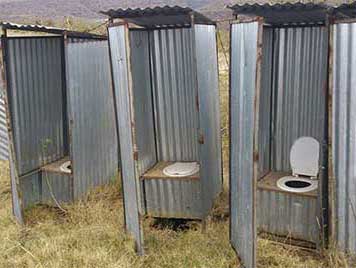
Who invented the toilet?
If ever there was an invention that made life more comfortable it must be that contraption we all use every day that is widely attributed to Yorkshireman Thomas Crapper. In fact it was Sir John Harrington who invented the first flush toilet way back in 1596, he built one for Queen Elizabeth 1 (thronemakers to the royal family?). Alexander Cummings patented the water closet in much its present day form in 1775 but Thomas Crapper was a businessman, flush with success, and he promoted and popularised its use and his is the that name that stuck - so to speak.
While many names have been coined for the humble lavatory over the years the equipment itself has changed little since Alexander Cummings efforts all those years ago. A bowl you sit on, a tank full of water to flush it and a U bend full of water to stop the gases from the sewer coming up the pipework.
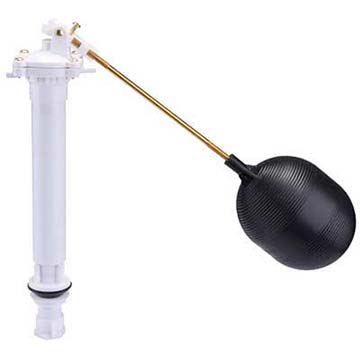
Aussies have expressive words like thunderbox and dunny, Englishmen go to the long drop, navy types go to the head and soldiers visit the Khazi. Americans on the other hand must always be constipated and tired, they never go to a toilet but often need a restroom.
No but seriously we should respect our humble bog. It carries on working day in and day out and generally gives little trouble in spite of having two important mechanisms that can easily fail. The inlet valve and the flush mechanism. Murphy’s law says that they will fail just at the wrong time.
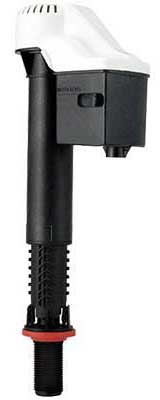
You know what it’s like, you go to a fancy do at your bosses house and feel the need to find the little boys (or girls) room. You use the tut but then, oh dear, the flush doesn’t work. You lift the top off frantically trying to find out what is wrong while someone comes and tries the door handle. The comfort room becomes a discomfort room.
Filling mechanism
The inlet valve is the valve that opens to refill the cistern after we have flushed the john. It’s the bit that drives us mad by going sssssssshhhhhhhhttt loudly when we have felt the “call of nature” (what sort of a phrase is that?) in the middle of the night. Modern toilets have plastic float valves which tend to be quiet and reliable but serious toilets still use ball valves or ball cocks whose basic design has been in use for probably a hundred years. Made from brass with a plastic ball as a float they are simple and reliable but do have a tendency to make those loud sssssshhhhhht noises.
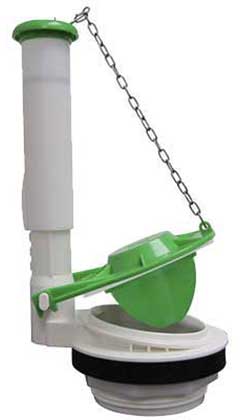
Flush mechanism
The flush mechanism on the other hand is the part that releases the water. In the old days operated by a long chain hanging from an overhead tank these days they have levers on the side or push buttons on the top or in the front. With the advent of double flush water closets these mechanisms are more complicated than before. Generally speaking this is the mechanism that tends to give most problems. If your toilet constantly runs water and the cistern doesn’t fill it is usually the flush mechanism that is causing the problem.
Problems with flush mechanisms
In Britain most modern toilets have a lever mechanism that never seems to work very well. You always seem to have to press the lever in a way that gives some momentum to sort of encourage it to work. In Australia most toilets have front or top button mechanisms which are reliable and work well.
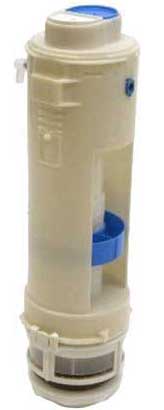
In Bali top button flush are usual though you might still find an older loo have flushing mechanisms that is both primitive and unreliable. A spindly lever pulls a thin chain that lifts a rubber flap to release the water. Levers bend, chains break and the rubber flaps perish to give an ongoing series of problems. People constantly keep them going by lifting the lid and “tinkering”.
Good advice is don’t mess around but fit new parts. Better advice is to install a more reliable model. You could go for a traditional one, as a local man recently said “the best toilets are the local ones, they never go wrong”. True and a good solution if you don’t mind squatting and flushing with a little pan or if you don’t want to read the newspaper.
More expensive toilets are more reliable
Thankfully there are more appropriate solutions. These days modern privys are available in Bali that are of better design and far more reliablethan their predecessors. You will probably need to check alternatives out before you buy one. They come in all shapes, sizes and colours and can be very expensive. Beware, if you pay a lot for your WC you can be pretty sure your luxury loo will require expensive parts of it goes wrong. A rather elegant toilet recently set the owner back Rp500,000 for a new seat. Unfortunately price does not necessarily relate to quality, I saw a very fancy fake marble one recently (yuk) that after only a short time looked terrible and, more importantly, performed little better than it looked.
Toilet seats
Broken toilet seats are a common problem in Bali because people who have spent their lives squatting can’t get used to sitting. They step onto the seat to squat and break the seat. You may have noticed that the convention here appears to be to leave the seat up (have you ever witnessed one of those ridiculous arguments between husbands and wives about not putting the toilet seat down?). Leaving the seat up is a good idea if you don’t want it broken! (the seat I mean not the marriage).
Some tips
- Buy a good quality toilet but avoid expensive brands and fancy designs, Toto are cost effective, reliable and spare parts are readily available.
- Consider a squat toilet for the staff toilet.
- If the flush or fill mechanisms fail replace them with new ones.
- If the toilet is leaking get it repaired, the leak will use a lot of water and may stain the bowl.
- If someone starts using silicone to repair your leaking toilet, fire him and find yourself a real plumber.
- Don’t put toilet blue in your toilet cistern, the chemicals in it damage the rubber seals in your toilet.
With that I must finish, I need to see a man about a dog.
Phil Wilson
Copyright © Phil Wilson February 2007
This article, or any part of it, cannot be copied or reproduced without permission from the copyright owner.
